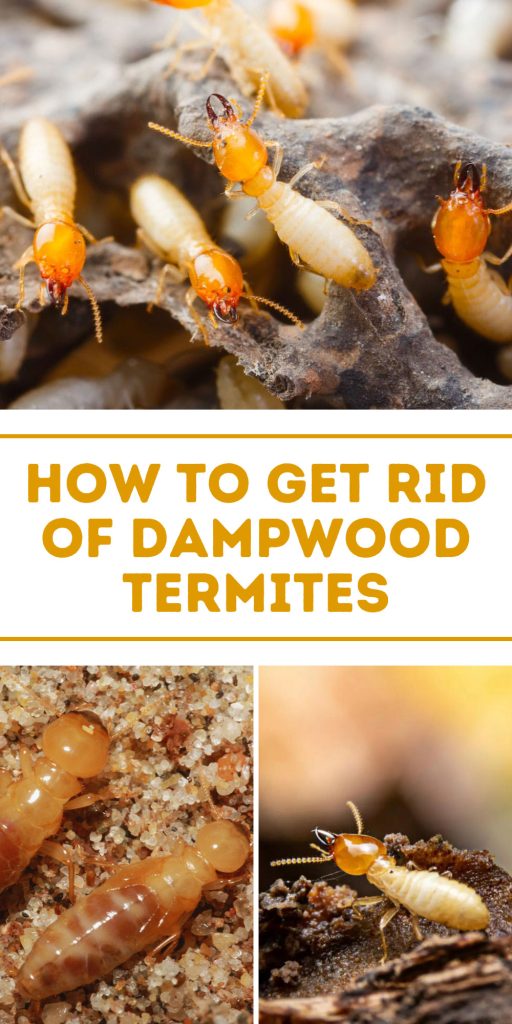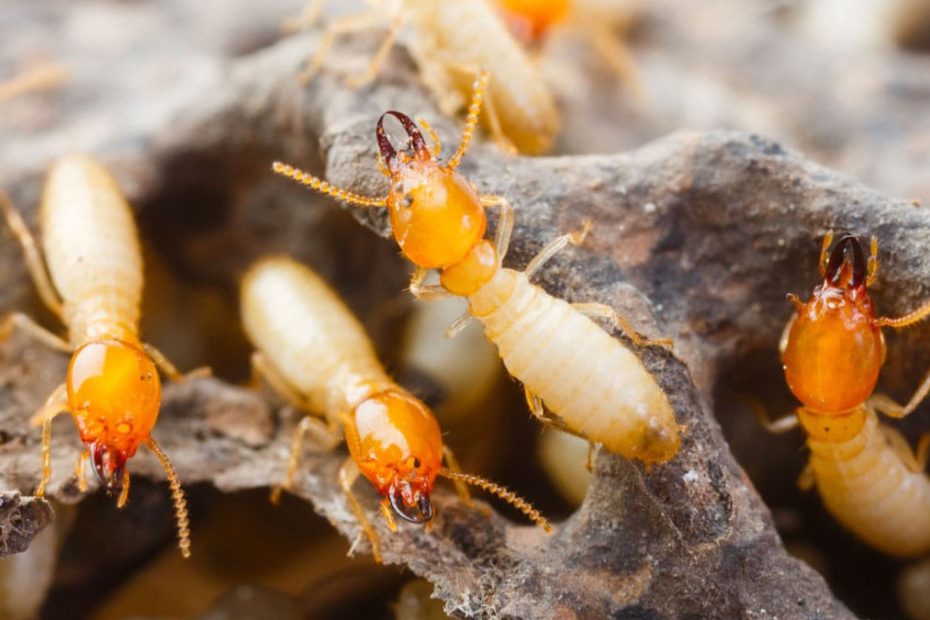Discovering dampwood termites in your home can be alarming. These pests thrive in moist wood, often indicating underlying issues with water damage or poor ventilation. Left unchecked, they can cause significant structural damage, turning your cozy haven into a costly repair project.
But don’t worry—getting rid of dampwood termites is entirely manageable with the right approach. This guide will walk you through effective strategies to eliminate these unwelcome guests and prevent future infestations. You’ll learn how to identify the signs of dampwood termites, address moisture problems, and choose the best treatment options for your situation. Let’s immerse and reclaim your home from these wood-destroying invaders.
Key Takeaways
- Identify Signs Early: Key indicators of dampwood termite infestations include swarmer sightings, discarded wings, damaged wood, and frass resembling sawdust. Early detection is crucial for effective management.
- Address Moisture Issues: Eliminating moisture sources is vital. Fix leaks, improve ventilation, grade soil properly, and seal gaps to create an inhospitable environment for dampwood termites.
- Use Treated Wood: Incorporate treated wood in construction and repair projects. Treated lumber and borate-treated wood are resistant to termites and rot, providing long-term protection.
- Implement Regular Inspections: Schedule professional inspections annually and frequently check high-moisture areas. Early identification of termite activity enables prompt action to prevent extensive damage.
- Apply Effective Treatments: Utilize chemical treatments like termiticides, as well as non-chemical methods such as moisture control and physical barriers. Professional pest control services can provide comprehensive solutions.
- Consider DIY Remedies: Boric acid, diatomaceous earth, and nematodes are effective DIY treatments to manage infestations. These methods target termites directly and create less hospitable environments for them.

Understanding Dampwood Termites
Dampwood termites thrive in moist wood, making them a concern for homes with water damage or poor ventilation. Recognizing these pests’ characteristics and signs helps in identifying and eliminating infestations effectively.
What Are Dampwood Termites?
Dampwood termites infest moist, decaying wood, unlike subterranean termites which seek soil contact. They prefer areas with high humidity, such as leaky roofs or damp basements.
Some key terms related to dampwood termites:
- Habitat: Moist, decaying wood in buildings and outdoors.
- Size: Larger than other termites; soldiers can reach up to 20 mm.
- Color: Pale brown to dark brown; soldiers may appear darker.
- Colony: Smaller than subterranean termites with fewer than 4,000 members.
Dampwood termites play a role in breaking down dead trees in nature. But, in your home, they indicate moisture issues and need prompt attention to prevent structural damage.
Signs of Dampwood Termite Infestation
Identifying signs of dampwood termite infestation early prevents extensive damage. Common indicators include:
- Swarmer Sightings: Flying termites near windows, doors, or lights, especially after rain.
- Discarded Wings: Piles of wings on window sills or floors.
- Damaged Wood: Wood with a smooth, clean appearance, leaving a honeycomb-like pattern.
- Frass: Termite droppings resembling sawdust found near infested areas.
If any signs appear, inspect your home thoroughly, focusing on areas with high moisture levels. Timely detection is crucial for effective pest management.
Preventing Dampwood Termite Infestations
Preventing dampwood termite infestations requires proactive measures to eliminate conditions that attract these pests. Focus on reducing moisture, using treated wood, and conducting regular inspections to safeguard your property.
Eliminating Moisture Sources
Dampwood termites need moist conditions to thrive. Reduce moisture in and around your home to prevent infestations.
- Fix Leaks: Address leaky roofs, faucets, and pipes promptly to prevent wood from becoming saturated.
- Improve Ventilation: Ensure proper ventilation in attics, basements, and crawl spaces by installing fans or dehumidifiers.
- Grade Soil Properly: Ensure soil is graded away from the foundation to prevent water accumulation near your home’s base.
- Seal Gaps: Seal any gaps or cracks that allow moisture to enter the structure.
Using Treated Wood
Using treated wood in construction is an effective strategy to deter dampwood termites. Treated wood is infused with chemicals that make it resistant to termites and decay.
- Select Treated Lumber: Choose pressure-treated wood for outdoor projects like decks, fences, and landscaping.
- Use Borate Treatments: Apply borate solutions to wood before construction to protect against dampwood termites and rot.
- Replace Infested Wood: When repairing termite damage, replace the affected wood with treated lumber to prevent future infestations.
Regular Inspections
Regular inspections help detect early signs of dampwood termite activity, allowing for prompt intervention.
- Schedule Annual Inspections: Hire a professional pest control service to conduct annual termite inspections.
- Inspect High-Moisture Areas: Check basements, crawl spaces, and water-prone areas for signs of termites.
- Look for Damage: Examine wood structures for hollow sounds, frass, and visible damage indicative of termites.
- Act on Findings: If inspection reveals termite activity, take immediate measures to address the infestation and eliminate the moisture sources.
Maintaining low moisture levels, using treated wood, and conducting regular inspections helps keep dampwood termites from becoming a problem in your home.
Methods to Get Rid of Dampwood Termites
Dealing with dampwood termites requires effective strategies to ensure complete eradication. Various methods are available, from chemical treatments to engaging professional pest control services.
Chemical Treatments
Chemical treatments offer a direct approach to eliminating dampwood termites. These chemicals target the pests where they live, specifically designed for effective eradication.
Termiticides
- Contact Termiticides: These are applied directly to infested areas. The pests come into contact with the termiticide and are killed.
- Non-Repellent Termiticides: These don’t repel termites but let them carry the toxin back to their colonies, spreading it to others.
Wood Treatments
- Boric Acid: When applied to wood, it kills termites by disrupting their digestive systems. Effective for three to six months.
- Copper-Based Preservatives: These are often used for treating wood before construction. They prevent termite infestation by making wood less palatable.
Non-Chemical Treatments
Non-chemical treatments provide eco-friendly options for termite control. They emphasize altering the environment to make it inhospitable for termites.
Moisture Control
- Fix Leaks: Repair leaky pipes and roofs promptly.
- Improve Ventilation: Ensure proper airflow in crawl spaces, basements and attics.
- Dehumidifiers: Use in high-humidity areas to reduce moisture levels.
Physical Barriers
- Sand Barriers: Installing sand around the foundation can deter termites since they can’t move through sand easily.
- Stainless Steel Mesh: This mesh prevents termites from entering structures through small gaps and cracks.
Professional Pest Control Services
Sometimes, intricate infestations necessitate professional intervention. Pest control experts provide comprehensive strategies.
Inspection and Assessment
- Detailed Inspection: Professionals will examine your property, identifying infestation extent and moisture sources.
- Treatment Plans: Based on the assessment, they propose tailored treatment plans.
- Fumigation: Involves sealing and treating the entire structure with gas to eliminate all termites.
- Heat Treatments: Utilizing high temperatures to kill termites, usually around 120-140°F.
Engaging professionals ensures that all potential termite entry points and colonies are addressed, providing peace of mind. Regular inspections and treatments can prevent future infestations, saving you from costly repairs.
DIY Remedies for Dampwood Termites
If you’ve identified a dampwood termite infestation, you can use several DIY remedies to manage the problem effectively. These methods target the pests directly and help create an environment less conducive to their survival.
Boric Acid
Boric acid is a trusted solution for termite control. It acts as a stomach poison for termites, causing them to die gradually.
Preparation and Application:
- Mixing Solution: Combine boric acid powder with water, creating a liquid mixture.
- Spraying: Target infested areas, ensuring thorough coverage.
- Frequency: Repeat applications every three days for two weeks.
Advantages:
- Non-toxic to humans when used correctly.
- Cost-effective and easy to apply.
Diatomaceous Earth
Diatomaceous earth (DE) is a natural and non-toxic option for tackling termites. It works by dehydrating and eventually killing the insects.
Application Process:
- Direct Sprinkle: Apply DE directly to infested wood and nearby areas.
- Repeat: Reapply monthly to ensure prolonged effectiveness.
Advantages:
- Safe to use around pets and humans.
- Environmentally friendly option.
Nematodes
Nematodes are microscopic roundworms that parasitize termites, effectively controlling their population.
Usage Steps:
- Purchase: Acquire nematodes from a garden store or online retailer.
- Mix with Water: Follow instructions to mix nematodes into a solution.
- Application: Apply the solution to termite-infested wood and soil.
- Natural biological control method.
- Safe for humans and plants.
Exploring these DIY remedies gives you effective strategies to manage dampwood termite infestations and protect your home.
Conclusion
Dealing with dampwood termites may seem daunting, but with the right approach, you can protect your home effectively. By addressing moisture issues and using treated wood, you eliminate the conditions that attract these pests. Regular inspections are critical in catching infestations early and preventing extensive damage.
Whether you choose chemical treatments, non-chemical methods, or DIY remedies, there are plenty of options to tackle dampwood termites. For severe cases, don’t hesitate to engage professional pest control services to ensure comprehensive management. Taking these proactive steps will help you maintain a termite-free home and safeguard your investment for years to come.
Frequently Asked Questions
What are dampwood termites?
Dampwood termites are a type of termite that prefers moist, decaying wood. They are larger than other termites, ranging in color from pale to dark brown, and typically inhabit areas with high humidity like leaky roofs or damp basements.
What are the signs of a dampwood termite infestation?
Signs of a dampwood termite infestation include swarmer sightings, discarded wings, damaged wood, and termite droppings (frass). Early detection is crucial for effective pest management.
How do I prevent dampwood termite infestations?
To prevent dampwood termite infestations, reduce moisture by fixing leaks, improving ventilation, and grading soil properly. Use treated wood in construction and conduct regular inspections, especially in high-moisture areas.
What are effective methods to eradicate dampwood termites?
Effective methods for eradicating dampwood termites include chemical treatments (e.g., termiticides, boric acid) and non-chemical treatments (e.g., moisture control, physical barriers). Professional pest control services may be necessary for severe infestations.
Can I use DIY methods to manage dampwood termite infestations?
Yes, DIY methods include using boric acid, diatomaceous earth (DE), and nematodes. Boric acid acts as a stomach poison, DE dehydrates termites, and nematodes parasitize them. These methods empower homeowners to proactively manage termite issues.
Why is moisture control important in managing dampwood termites?
Moisture control is essential because dampwood termites thrive in high-humidity conditions. By reducing moisture levels, you create an inhospitable environment for these pests, thereby preventing and managing infestations.
When should I seek professional pest control services for dampwood termites?
Seek professional pest control services if you have a severe infestation or find it challenging to control the termites independently. Professionals provide thorough inspections, tailored treatment plans, and advanced methods like fumigation and heat treatments.
